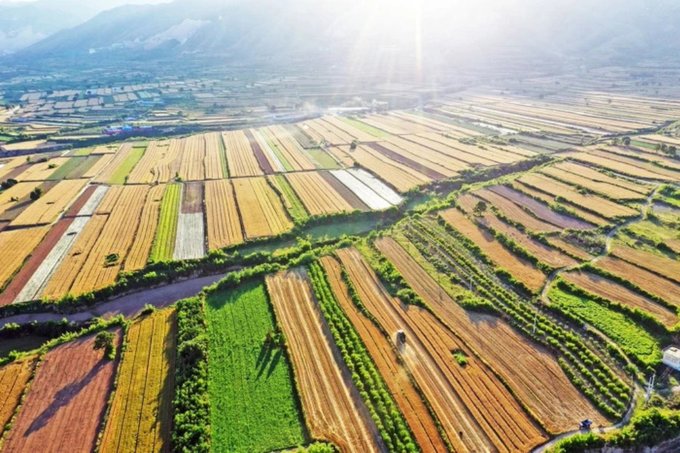You are using an out of date browser. It may not display this or other websites correctly.
You should upgrade or use an alternative browser.
You should upgrade or use an alternative browser.
Food & Resource Security
- Thread starter Maikeru
- Start date
The problem I see with farmed fish is of nutrition. [Farmed] fish are incapable of producing EPA/DHA (the most important types of Omega-3's). Fish meal doesn't contain these compounds. Rather, fish oil is extracted from wild-caught fish and fed to the farmed fish.. which begs the question: why not just consume the wild-caught fish directly?True, I'm simply looking at it from a cost perspective, fish meal is more applicable for higher end carnivorous fish (salmon, tuna) I'd imagine , since you can feed tilapias with pelletized feed crops which will be dirt cheap.
Infact, from a quick google that's exactly what they do:
Pond tilapia gets fed with pellets that are 50% manure, 37% bran and only 2% fishmeal.
Compare that against salmon feed which has upwards of 30% fishmeal/oil content.
EPA/DHA is primarily produced by marine algae, fed upon by crustaceans, preyed on by smaller fish and then bigger fish up the food chain.
Farmed tilapia has the worst EPA/DHA profile. The vast bulk of extract is fed to farmed salmon and trout.
Crop yields in China hit record highs despite extreme weather events. A good sign that efforts to use technology and modern farming practices to boost yields in working. There's still plenty of room for improvement too, with use GMO crops expected to massively ramp up over the next few years. Speaking of which
China has cultivated its second harvest of genetically modified giant rice in a mountainous region with poor soil, with greater results, and Beijing is hailing the achievement as progress in its efforts to bolster food security amid soaring global rice prices.
The high-yielding home-grown strain of rice, which grows about twice as tall as ordinary rice, was recently harvested at trial farms in southwest China’s Sanzhou county, Guizhou province, the state’s Xinhua reported on Thursday.
In the area famous for its karst landscapes and challenging soil conditions, the yield reached 12.6 tonnes per hectare (11,243 pounds per acre), according to a Xinhua interview with a local farmer who had volunteered to grow the experimental variety. It marked a 5 per cent increase from 12 tonnes per hectare last year.
The 12.6-tonne yield from this year’s giant-rice harvest in Guizhou was also nearly 1.8 times greater than the average Chinese rice yield in 2022, which stood at 7.1 tonnes per hectare, according to the National Bureau of Statistics.
This giant-rice variety was developed in 2017 by the Institute of Subtropical Agriculture at the Chinese Academy of Sciences. Its stalks can reach around two metres tall, and it is more resistant to pests and flooding, according to the institute.
World's first: China's first independently developed unmanned vertical plant factory is put into use
on December 3 that according to CCTV News, the first unmanned vertical plant factory independently developed by the Institute of Urban Agriculture of the Chinese Academy of Agricultural Sciences was recently put into use in Chengdu, Sichuan ..

the unmanned vertical plant factory is an efficient agricultural system that produces food year-round in a multi-story building. This system can be used for food production in cities, and can also be used in the Gobi desert and wasteland. It has obvious advantages in solving future problems such as stable supply of food nearby and expanding cultivated land space in cities and other places.
The research team of the Chinese Academy of Agricultural Sciences has made significant progress in plant light formula and light efficiency improvement, solving the global problem of "low light efficiency and high energy consumption" in plant factories. The 20-story vertical unmanned plant factory they built is the first of its kind in the world.
Gan Bingcheng, deputy director of the Institute of Urban Agriculture of the Chinese Academy of Agricultural Sciences, said that their automated production system should be the world's leading level, and the number of individual production floors in the facility is also the highest in the world.
This vertical plant factory with up to 20 cultivation floors adopts self-cultivated new crop varieties, a vertical three-dimensional cultivation system, an automatic nutrient solution supply system, artificial simulated energy-saving light sources, and an AI-based smart management and control system to achieve the goal of growing plants in the vertical space. Stable production of food within the year. Regardless of climate or region, lettuce can be harvested once every 35 days under controlled environmental conditions. In addition to lettuce, other leafy vegetables, fruit vegetables and edible fungi can also be produced on a large scale here.
It is reported that this vertical farming system can produce more than 10 crops of vegetables a year, with an annual output of more than 50 tons, equivalent to the output of 60 acres of traditional farmland. This not only greatly improves land use efficiency, but also saves valuable farmland resources.
New Land Grain Corridor was made to speed up transport of grains grown beyond the Urals to China. Instead of transporting grain via railroad to Russian ports where it is then shipped to China, it is just sent via rail to China directly.

This includes a dry land port facility at l Zabaikalsk to transport grain. Supposedly capable of handling up to 8 million tons of grain a year.
To expand handling of cargo will require the construction of more dedicated grain transport hopped cars for the railroad.
Over 200,000 Chinese farmers have resettled in the Russian Far East and grow grain in Russia which will be shipped to China.
Last edited:
supercat
Colonel
Record-breaking harvest of grains anticipated:


